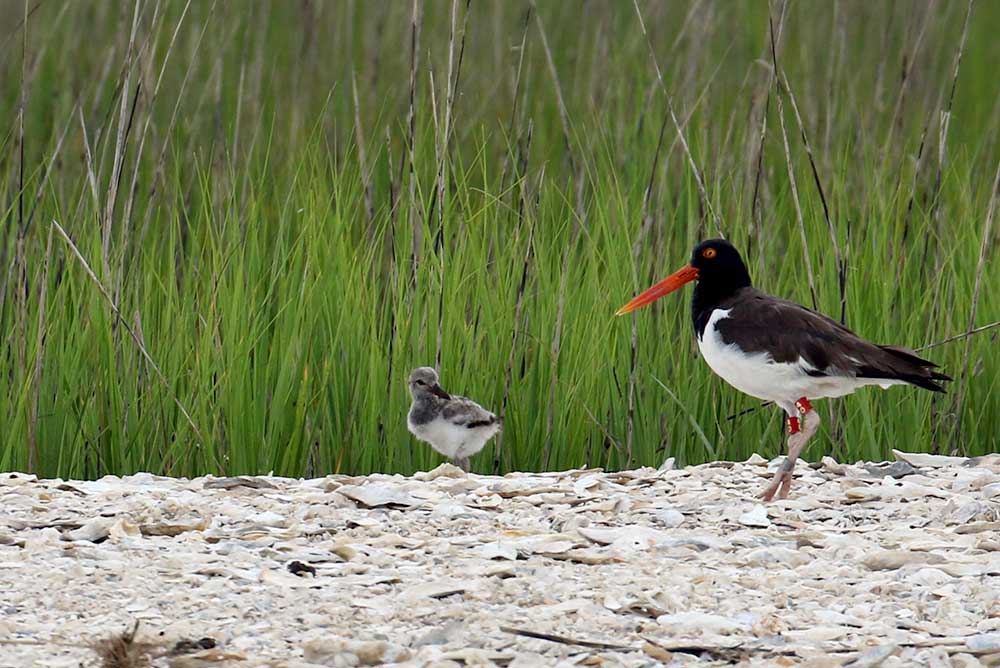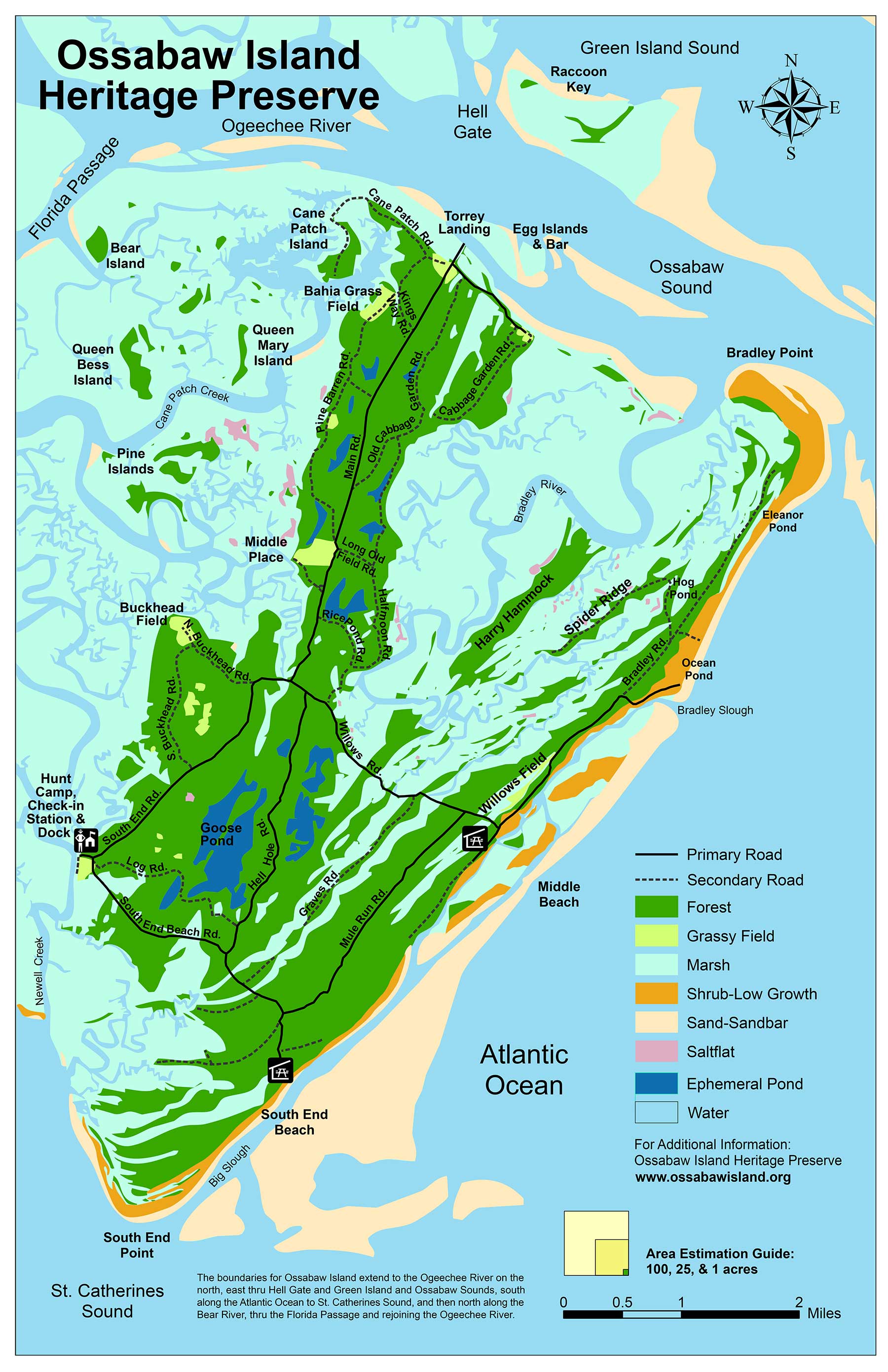New Outreach Programs Protect Critical Shorebird Habitats
By Abby Sterling, Ph.D.
Director of Manomet’s Georgia Bight Shorebird Conservation Initiative
As you make your way to Ossabaw Island through winding tidal creeks, you pass shell rakes lining the marshes and sand bars and mudflats that are exposed at lower tides. Without an experienced boat captain some of these features can make the trip very difficult. But these obstacles that make navigation a challenge are critical habitats for shorebirds. At this time of year, we see our nesting species like American Oystercatchers incubating eggs or raising chicks on shell rakes. Migratory species like Red Knots and other sandpipers feed on horseshoe crab eggs and invertebrates that will become fuel to carry them to their Arctic nesting grounds. One way that we can protect these sensitive remote habitats is through engaging the specific audiences that access them.
Many of these remote places are sensitive to negative impacts when people, often unintentionally, disturb the shorebirds that rely on them. A primary goal of Manomet’s Georgia Bight Shorebird Conservation Initiative is to reduce negative impacts for human recreational disturbance, and an effective way to do this is through targeted education and outreach. Over the last year and a half, we at Manomet have worked with partners including Katie Higgins of UGA Marine Extension and Georgia Sea Grant to develop and launch the CARE program, which is an educational certification to share information with ecotourism groups on the Georgia Coast. Our primary goal is to reduce disturbance at remote places where guides might be taking groups. We completed the first year of the CARE course with 17 participants in the first cohort. Guides and owners of ecotourism outfits from Savannah to Brunswick participated in an online learning platform, weekly live lectures, and an in-person field day component to earn their certification.
Another important way we are seeking to protect the more remote habitats that shorebirds rely on between the mainland and the barrier islands like Ossabaw is to work with recreational boaters who might visit places like Raccoon Key or other sandbars, and who unintentionally disrupt feeding, nesting, and resting shorebirds. In cooperation with Georgia DNR, we are conducting surveys of boaters throughout the summer to learn more about why they visit these sites, what they know about shorebirds, and from where they access the sites. Then, we will launch a steward program to help educate recreational boaters about the needs of shorebirds and other wildlife, and how they can reduce negative impacts to these sensitive species. This is especially important because, for some of the boaters, these remote sand bars and inlets are beloved and traditional places that they come to every weekend, every year throughout the summer. On Memorial Day, we talked to one group who said they’d been coming to their site for 40 years!
While Ossabaw and other beautiful, undeveloped barrier islands provide incredible habitat for shorebirds on quiet beaches and marshes, the busier places in-between are also valuable. By working with the communities that value and depend on these places, we can form alliances and shift the culture to one where increased awareness means more opportunities for wildlife. This, in turn, protects fragile habitat and protects the intrinsic value of our coast and ensures that we will support shorebirds and other wildlife into the future. The next time you’re travelling to one of the islands, take a moment to appreciate all the interesting habitats on the way; these important places deserve our attention, too!
________________________________
Update from Manomet’s Georgia Bight Shorebird Conservation Initiative: We are pleased to share this film from the Cornell Lab of Ornithology which documents the discovery of the largest known nighttime whimbrel roost just twenty miles south of Charleston, South Carolina. Biologists observed nearly 20,000 whimbrel (half the estimated eastern population of the declining shorebird) stopping at Deveaux Bank along their migration north. I encourage you to watch the film and to reach out to me at asterling@manomet.org to support our efforts.





